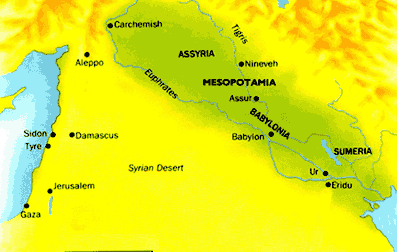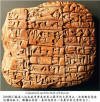

The first civilization was that of the Sumerians who became an urban society around 3500 BC.
What do you think urban means?
About how long ago did Sumer's urban society begin?
Sumer may very well be the first civilization in the world. From its beginnings as a collection of farming villages around 5000 BCE and its final collapse around 2000 BCE, the Sumerians developed a religion and a society which influenced both their neighbors and their conquerors.
Do you know the meaning of BCE? If not, look for clues to bring you close to the meaning.
Sumerian cuneiform, the earliest written language, was borrowed by the Babylonians, who also took many of their religious beliefs. Sumer was a collection of city states around the Lower Tigris and Euphrates Rivers in what is now southern Iraq. Each of these cities had individual rulers. The leader of the most powerful city could have been considered the king of the region.

Sumer was one of the first literate civilizations leaving many records of business transactions, and lessons from schools. They had strong armies, which with their chariots and phalanxes kept control over their less civilized neighbors. Perhaps the most lasting cultural remnants of the Sumerians though, can be found in their religion.
Questions